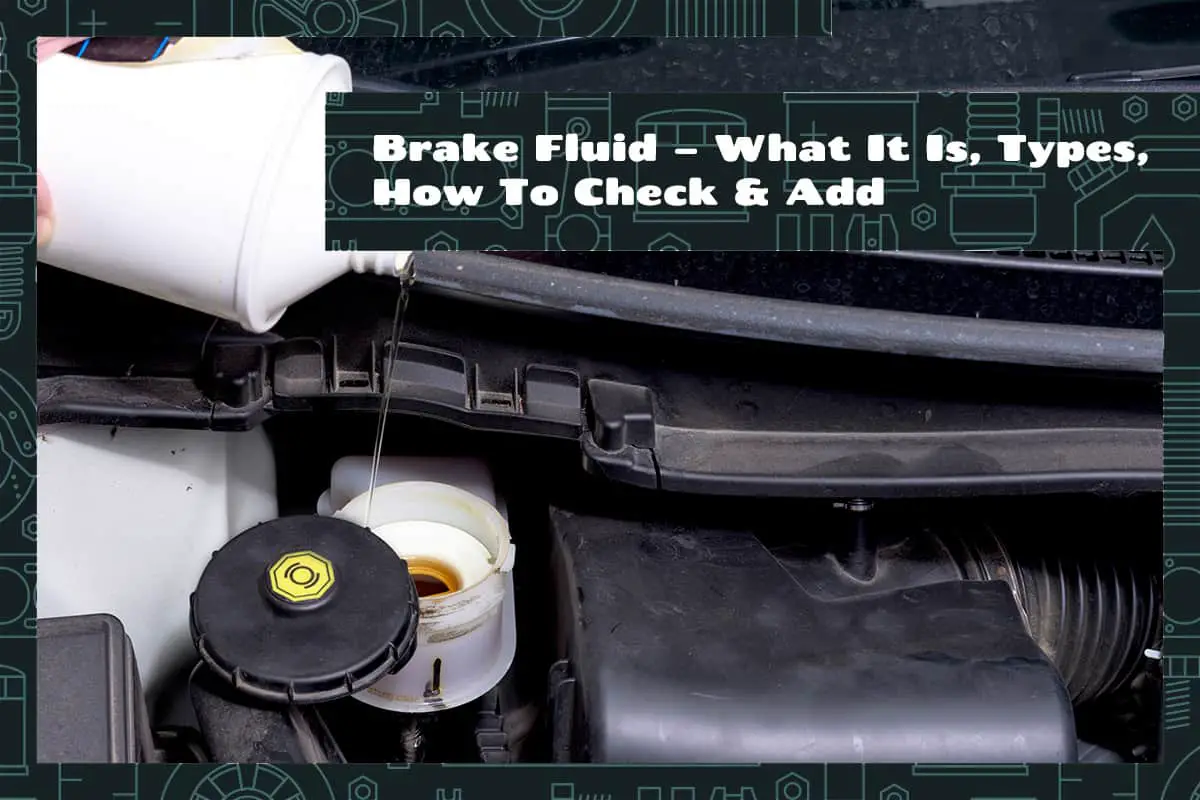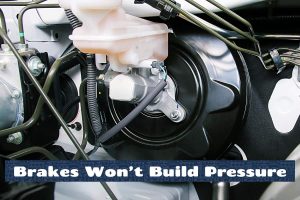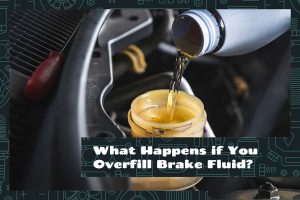Brake fluid is a crucial component in your car, yet it often gets overlooked. It carries force from the brake pedal to the wheels, allowing you to stop your car safely. So, understanding brake fluid, knowing its types, and learning how to check and add it is incredibly important for anyone who drives or owns a vehicle.
Brake fluid is a type of hydraulic fluid that transfers the force you apply on the brake pedal to the brake system of your vehicle. When you press the brake pedal, this fluid moves through the brake lines, activating the brakes and slowing your car down.
In this article, we’re going to delve into the details of brake fluid. We’ll explore different types of brake fluid and learn how to check and add brake fluid to your car.
Introduction to Brake Fluid
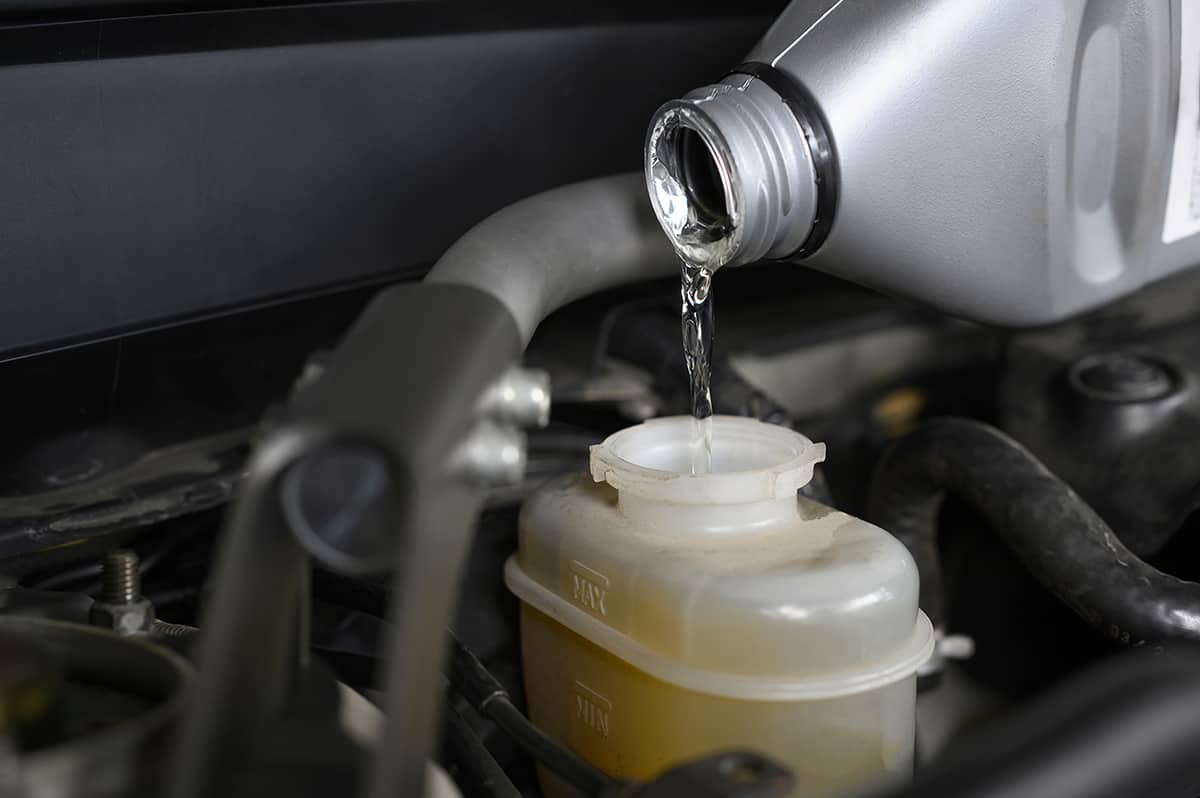
Brake fluid is a type of hydraulic fluid used in brake systems of vehicles. In simple terms, it’s a special liquid that helps your car stop when you hit the brakes. The term “hydraulic” means it’s used to transmit power in the system, similar to how water powers a water wheel.
Brake fluid is stored in the brake fluid reservoir, a small tank typically located near the back of the engine compartment. From here, it travels through a network of brake lines and hoses when you press the brake pedal.
How Brake Fluid Works
Here’s a simple way to understand how brake fluid works: When you press the brake pedal, it pushes a small piston inside a part called the master cylinder.
This action increases the pressure on the brake fluid inside the cylinder. Because liquids are nearly incompressible, the increased pressure transfers instantly to all four brakes, pushing another set of pistons that activate the brake pads. This process slows down your car or brings it to a halt.
Brake fluid and hydraulic pressure
In the world of physics, this is a great example of how hydraulic systems work. Brake fluid can transfer the force you apply to the brake pedal directly to the brakes on the wheels because it is incompressible. This means the brake system works instantly and evenly on all wheels.
The brake system is a closed system, meaning the fluid stays inside at all times. When the brake pedal is released, the fluid returns to the master cylinder, ready for the next braking action.
Impact of brake fluid on vehicle safety
If the brake fluid is contaminated or low, it can affect the entire brake system. This can lead to reduced braking power or, in the worst case, a total brake failure.
Brake fluid’s high boiling point plays a key role in maintaining its performance under extreme conditions. During intense braking (like when you’re driving downhill for a long time), the brakes generate a lot of heat. Brake fluid has a high boiling point, so it doesn’t turn into gas, which is compressible and would create bubbles in the system. This would lead to brake fade or even total brake failure.
Types of Brake Fluid
Just as different cars need different types of fuel, they also require different types of brake fluid. Let’s discover the varieties and what makes each one unique.
1. DOT 3
DOT 3 is a common type of brake fluid used in many vehicles. It has a lower boiling point compared to other types, which means it can get hotter quicker during intense braking. This makes it a suitable choice for regular driving conditions but less ideal for heavy-duty or performance vehicles. It’s important to note that DOT 3 brake fluid is glycol-based and can absorb water over time, which could lead to a decrease in its performance.
2. DOT 4
DOT 4 brake fluid is also glycol-based and can absorb water. However, it has a higher boiling point than DOT 3, making it a better option for high-performance vehicles or cars often driven in demanding conditions. But remember, since DOT 4 fluid absorbs water quicker than DOT 3, it might need to be replaced more frequently.
3. DOT 5
DOT 5 brake fluid is not glycol-based but silicone-based. This means it doesn’t absorb water. It’s perfect for vehicles that need to be stored for long periods because it doesn’t corrode the brake system. However, it’s not suitable for vehicles with anti-lock brake systems (ABS) because it can trap air bubbles which can lead to inconsistent braking. Also, DOT 5 fluid has a higher boiling point than DOT 3 and DOT 4.
4. DOT 5.1
DOT 5.1 might sound like an upgrade of DOT 5, but that’s not the case. It’s actually more similar to DOT 4. It’s glycol-based and absorbs water. However, DOT 5.1 brake fluid has a higher boiling point than DOT 3, DOT 4, and even DOT 5, making it suitable for high-performance vehicles and severe driving conditions.
Signs You Need to Check Your Brake Fluid
Before we start with the actual process, let’s learn about some tell-tale signs that indicate it’s time to check your brake fluid:
- Brake light on: Your car’s dashboard has a light for the braking system. If this light comes on, it’s a good idea to check your brake fluid.
- Spongy brake pedal: If your brake pedal feels spongy or soft when you press it, it could mean there’s not enough brake fluid in the system.
- Weird noises: If you hear strange sounds when you apply brakes, it’s a clear sign something’s not right. It might be the brake fluid.
- Leaking fluid: If you see a clear or brown fluid under your car, it could be the brake fluid leaking. Don’t ignore this!
Checking Brake Fluid
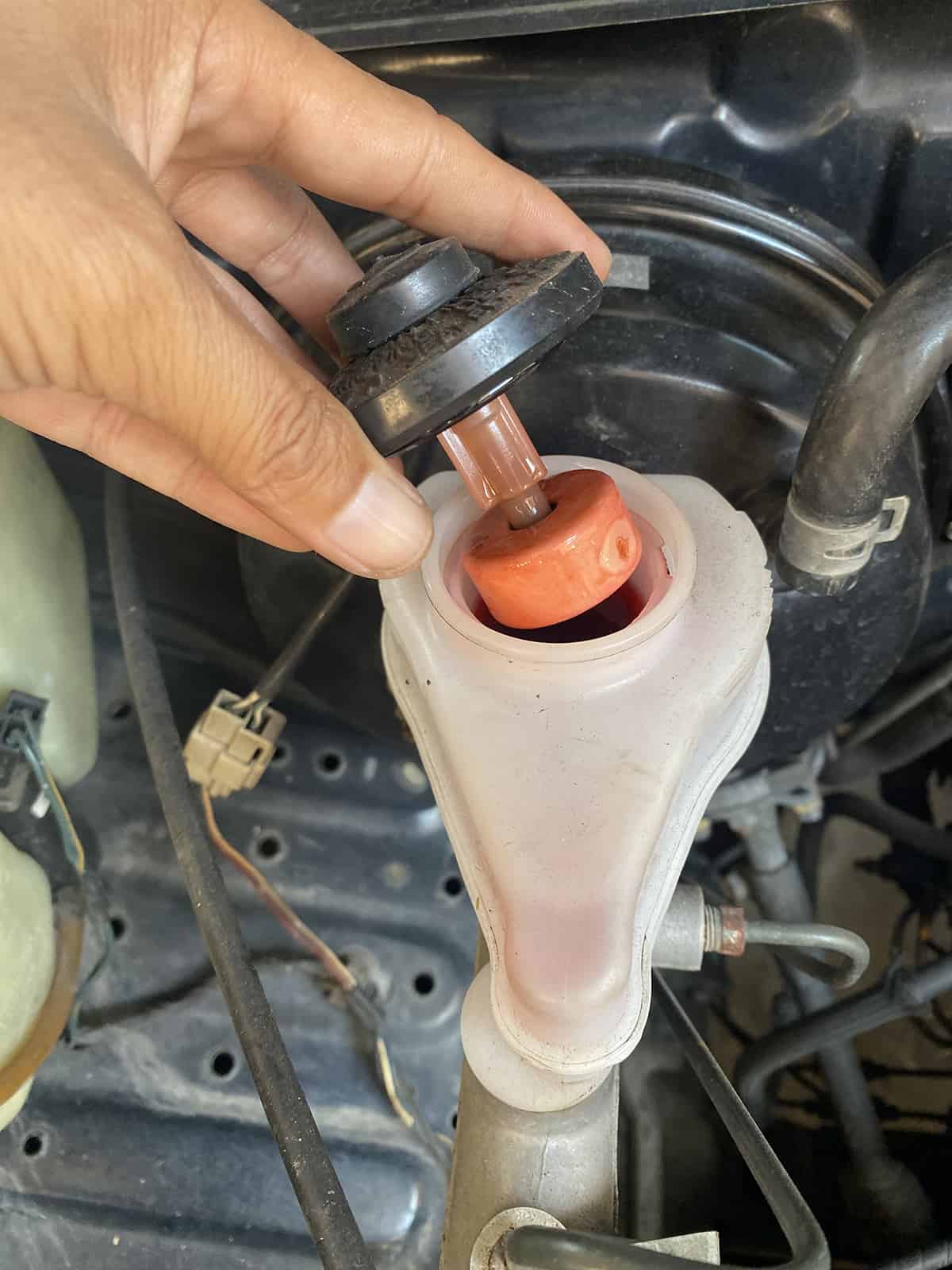
Now, let’s go through the steps of checking brake fluid in your car:
- Park on a flat surface: Make sure your car is off and parked on a flat surface. This ensures accurate reading of the fluid level.
- Open the hood: Pull the lever inside your car to pop open the hood. Then, release the latch and lift the hood.
- Locate the brake fluid reservoir: Look for a small, transparent reservoir on the back side of the engine compartment. If you’re not sure, your car’s manual will guide you to its location.
- Check the fluid level: On the outside of the reservoir, there should be two lines: one for ‘MAX’ and one for ‘MIN’. The fluid level should ideally be near the ‘MAX’ line. If it’s near or below the ‘MIN’ line, you need to add more fluid.
- Inspect the fluid’s color: Brake fluid should be clear or amber. If it’s dark or dirty, it needs to be replaced.
Adding Brake Fluid
Let’s go through the steps of adding brake fluid:
- Buy the right brake fluid: First, make sure you have the right type of brake fluid for your car. Check your car’s manual if you’re not sure.
- Open the brake fluid reservoir: Under your car’s hood, locate the brake fluid reservoir and open the cap.
- Add brake fluid: Pour the brake fluid slowly into the reservoir until it reaches the ‘MAX’ line. Be careful not to overfill it.
- Close the reservoir: Put the cap back on the reservoir securely.
- Clean up: Wipe off any spills immediately as brake fluid can damage your car’s paint.
Changing Brake Fluid
Changing brake fluid is a bit more complex and might require a professional mechanic, but let’s go through the steps:
- Drain the old brake fluid: Open the brake fluid reservoir and use a syringe or baster to remove the old fluid.
- Add new brake fluid: Now add the new brake fluid up to the ‘MAX’ line.
- Bleed the brake lines: This step requires two people. One person pumps the brake pedal while the other loosens the bleed screw located on the brake caliper, allowing old fluid and air to escape. Close the screw before the pedal is released. Repeat this process until clean fluid comes out.
- Check the fluid level: Once all lines have been bled, check the fluid level again and add more if necessary. Remember to always keep it between ‘MIN’ and ‘MAX’ lines.
